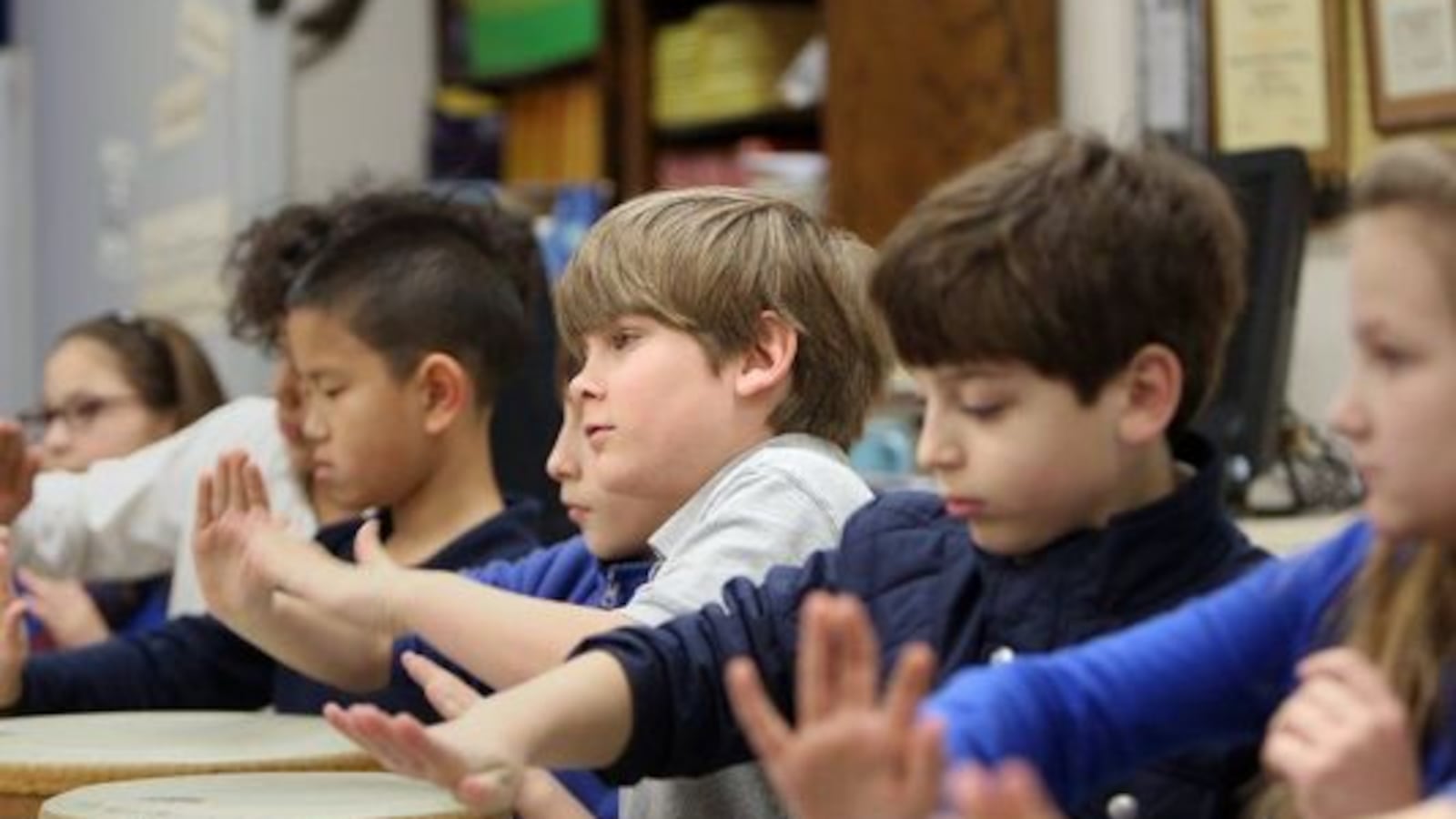The University of Memphis is proposing to operate a middle school along with its existing elementary school while boosting student diversity in its programs.
The university’s elementary, Campus School, has the highest percentage of white students in the city, at 66 percent in 2017, and the lowest percentage of students living in poverty, 8 percent the same year. By comparison, about 8 percent of students in Shelby County Schools are white, and 59 percent live in poverty.
That especially matters in Memphis, where schools are more segregated than they were in 1971, when a judge used the racial makeup of schools to order desegregation. A growing body of research shows that segregated schools especially disadvantage students of color.
Remy Debes, a member of the middle school’s steering committee and a philosophy professor, presented the university’s plans for a new middle school to Shelby County Schools board members on Tuesday.
“My wife is Indian and we have biracial children and we have lots of concerns about the diversity inside Campus School. It’s not that it’s horrendous, but it’s not representative of Memphis,” Debes said. “So, the goal here has been from the get-go: How do we create a school that looks more like Memphis?”

But the university’s strategies to diversify its proposed middle school have not been tried at the elementary school, prompting questions from some school board members, who have the final say if the Shelby County Schools will contract with the university.
“I understand what your intent is behind the model, but it’s hard for me to understand that if that’s not currently reflected in how Campus School is,” said board chair Shante Avant. “It’d be interesting for me to learn from your committee what your plan is for that. Because if you don’t currently have a student body that is reflective of what you’re saying you want the school to be, how would you get there?”
“Campus Elementary was much more diverse when I was there in the 70s and 80s than it is now,” added school board member Michelle Robinson McKissack. “Be intentional. At that time, that first wave post-integration, they were intentionally trying to make sure they would do that.”
The university announced in March it would explore opening a middle school to build off the successes of Campus School, which often ranks among Memphis’ highest-performing on state tests. The school would be housed in the former St. Anne Catholic School near Highland Street and Spottswood Avenue.
So far, the university plans for a third of students to be children of faculty and staff, a third would come from the neighborhoods in a two-mile radius from the East Memphis school, and a third come be from the rest of the county.

Until recently, Campus School was the only school with a contract in Shelby County Compared to charter schools, contract schools have more say in how they choose students. That allows University of Memphis to give priority to children of faculty and staff. But federal law prohibits explicit race quotas for student enrollment.
Related: Memphis’ only program for adults to get high school diploma gets lifeline from district leaders
Still, other schools, like the recently opened charter school Crosstown High, have attracted applicants who vary in academic standing, race, and class through community outreach campaigns.
Although Campus School is also open to university service staff who don’t make as much money as faculty, Debes said there’s room to grow in advertising the opportunity to them.
“And that’s one of the things we will work to try to disseminate information about the school — not just to the community and the county but the university faculty and staff,” he said.
“I hope that you will be very targeted in making those families aware that this is out there as an option for them,” McKissack said.
To attend the proposed middle school, students would have to meet three requirements:
- Satisfactory behavior
- Fewer than 15 unexcused absences, tardies, or early dismissals
- On or above grade level scores on the state’s TNReady test or MAPS, a national test on student growth.
Some school board members took issue with some of the admission requirements, saying they are too narrow to attract the diverse student body they are seeking. Debes said that’s why the school would accept teacher recommendations to explain why a student doesn’t meet one of the requirements.
“We recognize that there are lots of brilliant children out there who are looking like they’re falling below grade level precisely because their learning styles are different,” he said. “We have to make sure the parents and families understand that just because you don’t meet those three criteria on official record, doesn’t mean there’s not a chance for your kid to get into that school.”
“I don’t know if a teacher is going to give a letter for a child who has (a poor grade) in conduct,” said board member Stephanie Love.
Debes said the university would look to Shelby County Schools for advice on reaching out to families in the area. But he also doesn’t want nearby schools — such as the sought-after Maxine Smith STEAM Academy — to think the university is poaching their smartest students.
Other details about the makeup of the school include a “project-based learning” curriculum focused on science, technology, engineering, and math where students take fewer tests and do more group work based on solving real-world problems. Funding for the school would be based on Shelby County Schools’ “student-based budgeting” model that is based on student need rather than a fixed amount for every student.
A contract is expected to be discussed during the board’s Nov. 27 work session, with a vote scheduled for Dec. 4.

